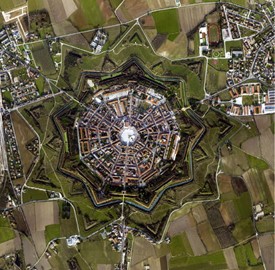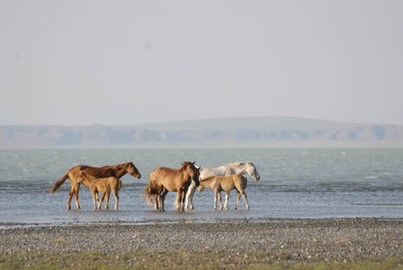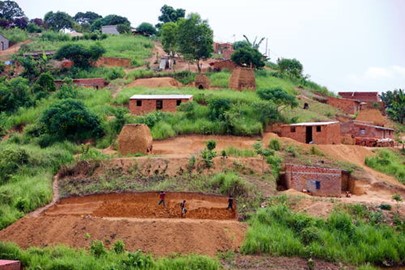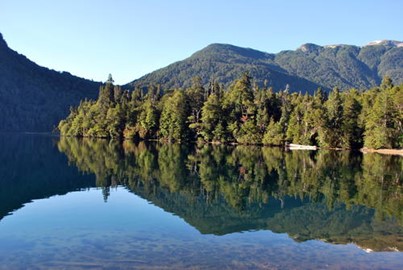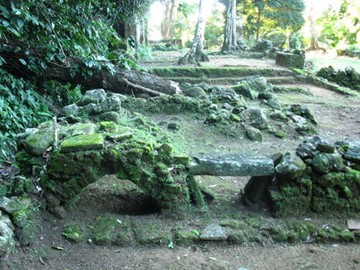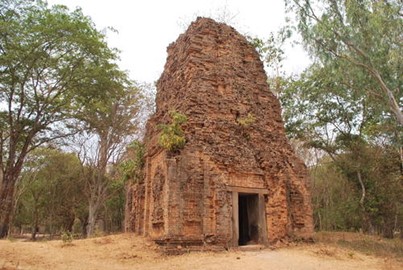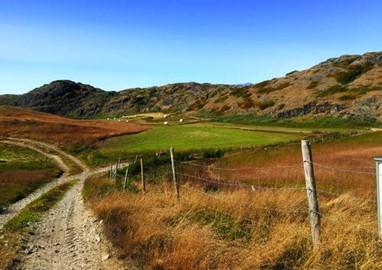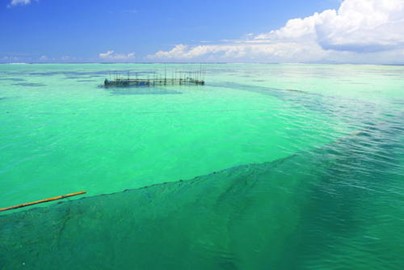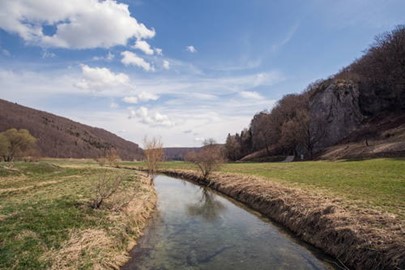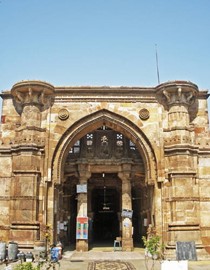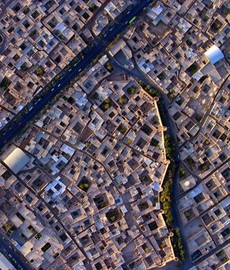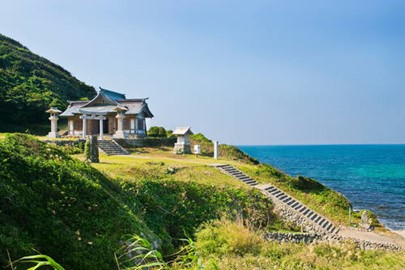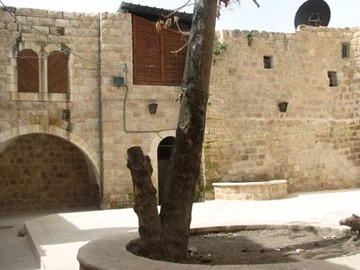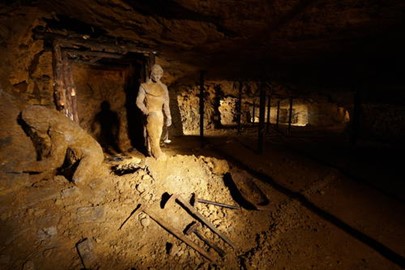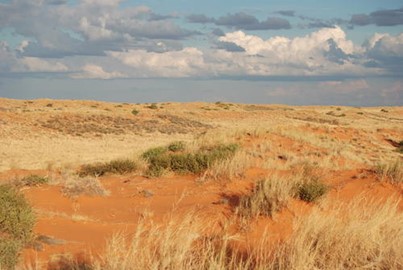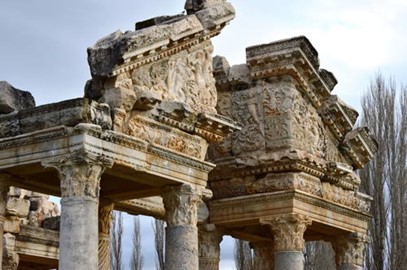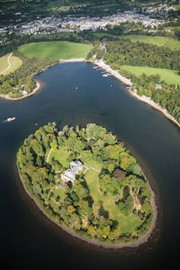year :: 2017
Venetian Works of Defence
Venetian Works of Defence, a UNESCO World Heritage site in Croatia, Italy, and Montenegro, recognized in 2017, are 15 fortified sites built by the Venetian Republic from the 15th to 17th centuries to protect its maritime trade routes. Featuring star-shaped forts, city walls, and coastal bastions like those in Kotor and Zadar, they showcase advanced military architecture. This transnational site reflects Venice’s strategic legacy, blending engineering prowess with historical significance across the Adriatic ... Read More
Landscapes of Dauria
Landscapes of Dauria, a UNESCO World Heritage site in Russia and Mongolia, recognized in 2017, is a vast steppe and wetland region straddling the Daurian ecozone, renowned for its migratory bird routes and pristine ecosystems. Featuring grasslands, lakes, and forests, it supports species like the white-naped crane amid a cycle of wet and dry seasons. This transnational site reflects the region’s natural heritage, showcasing a dynamic wilderness preserved across borders.
Mbanza Kongo
Mbanza Kongo, a UNESCO World Heritage site in Angola, recognized in 2017, is the historic capital of the Kongo Kingdom, thriving from the 14th century until its decline in the 19th century. Its ruins—featuring royal graves, churches, and a sacred tree—reflect a blend of African traditions and Portuguese colonial influences after 1483. This site showcases Angola’s precolonial heritage, preserving the spiritual and political legacy of one of Central Africa’s most powerful kingdoms.
Los Alerces
Los Alerces, a UNESCO World Heritage site in Argentina, recognized in 2017, is a pristine Patagonian wilderness preserving ancient alerce trees, some over 3,000 years old, within a network of lakes and forests. Nestled in the Andes, its glacial landscapes and rare species like the huemul deer reflect exceptional biodiversity. This site showcases Argentina’s natural heritage, safeguarding a living relic of Earth’s temperate ecosystems.
Valongo Wharf
Valongo Wharf, a UNESCO World Heritage site in Brazil, is a poignant historical landmark tied to the transatlantic slave trade. Built in the early 19th century, this stone wharf served as the main arrival point for enslaved Africans, bearing witness to a somber chapter of human history. Unearthed and preserved as an archaeological site, it stands as a powerful memorial to the resilience of Afro-Brazilian culture and a testament to the nation’s efforts to confront its past.
Sambor Prei Kuk
Sambor Prei Kuk, a UNESCO World Heritage site in Cambodia, is a 7th-century archaeological treasure from the pre-Angkorian Chenla Kingdom. This ancient capital features over 100 well-preserved brick temples adorned with intricate carvings, set amidst a forested landscape, showcasing early Khmer architectural innovation. Recognized for its historical and cultural significance, it offers a glimpse into the region’s early urban and religious development.
Qinghai Hoh Xil
Qinghai Hoh Xil, a UNESCO World Heritage site in China, is a vast, remote plateau renowned for its untouched wilderness and unique high-altitude ecosystem. Home to the endangered Tibetan antelope and other rare species, it features sprawling steppes, rugged mountains, and pristine lakes. This starkly beautiful landscape highlights nature’s resilience and ecological significance.
Kulangsu
Kulangsu, a UNESCO World Heritage site in China, is a historic island blending Chinese and colonial architecture from the 19th and early 20th centuries. Known for its car-free streets, Victorian-style buildings, and serene gardens, it reflects a unique cultural fusion from its past as an international settlement. This charming site preserves a legacy of global exchange and architectural beauty.
Kujataa
Kujataa, a UNESCO World Heritage site in Denmark, is a sub-arctic farming landscape in southern Greenland that showcases the intertwined histories of Norse and Inuit cultures. Inscribed in 2017, it highlights over a thousand years of agricultural adaptation to the harsh Arctic environment, beginning with Norse settlers in the 10th century who introduced farming practices, followed by Inuit communities who blended farming with marine hunting. The site features archaeological ruins, modern sheep farms, and ev... Read More
Asmara
Asmara, a UNESCO World Heritage site in Eritrea, is renowned for its well-preserved modernist architecture, reflecting its colonial past under Italian rule in the early 20th century. The city's historic urban layout features a striking blend of Art Deco, Futurist, and Rationalist buildings, including the iconic Fiat Tagliero service station, designed to resemble an airplane. Its unique cultural and architectural significance earned it recognition as a testament to human creative genius and urban planning fr... Read More
Taputapuatea
Taputapuātea, a UNESCO World Heritage site in Ra’iātea Island, is a sacred cultural landscape central to Polynesian heritage. It features a complex of ancient marae—open-air temples—built between the 14th and 18th centuries, reflecting 1,000 years of mā’ohi civilization. These stone structures served as political, ceremonial, and spiritual hubs, connecting the living with ancestors and gods. Nestled amidst forested valleys, a lagoon, and coral reefs, it showcases traditional Polynesian architecture and navi... Read More
Caves and Ice Age Art
Caves and Ice Age Art in the Swabian Jura, a UNESCO World Heritage site, features some of the oldest known human art, dating back over 40,000 years. Discovered within limestone caves, these artifacts include intricately carved figurines, such as the famous Lion Man, crafted from mammoth ivory. The site offers critical insights into early human creativity and Ice Age life, with archaeological findings like musical instruments and animal depictions. Ongoing excavations continue to reveal the cultural signific... Read More
Ahmedabad
The Historic City of Ahmedabad, a UNESCO World Heritage site in India, is renowned for its rich architectural legacy and cultural significance. Founded in the 15th century, it showcases a blend of Hindu, Islamic, and Jain influences through its intricately carved monuments, mosques, and traditional wooden havelis. The city's centuries-old walled structure and vibrant bazaars highlight its historical role as a thriving trade center. Its designation reflects its outstanding universal value as a testament to I... Read More
Yazd
The Historic City of Yazd, a UNESCO World Heritage site in Iran, is renowned for its ancient desert architecture and innovative adaptation to a harsh climate. This well-preserved urban center features a maze of mud-brick buildings, wind towers (badgirs) for natural cooling, and an extensive qanat water system. Its cultural significance lies in its testament to sustainable living and traditional craftsmanship in an arid region.
Okinoshima Island
Okinoshima Island, a UNESCO World Heritage site in Japan, is a sacred islet revered for its ancient Shinto rituals and archaeological treasures. This remote location hosts numerous shrines and offerings, reflecting centuries of maritime faith and cultural exchange. Its pristine natural setting and strict access, limited to male priests for annual ceremonies, underscore its spiritual significance and historical value.
Hebron
Hebron, a World Heritage site in Israel, is an ancient city located in the Judean Hills, renowned for its historical and cultural significance. It is home to the Cave of the Patriarchs, a revered burial site traditionally associated with biblical figures such as Abraham, Isaac, and Jacob, making it a key location in Jewish and Christian heritage. The city's old town features well-preserved architecture, including stone houses and narrow streets, reflecting its long history dating back over 3,000 years. Hebr... Read More
Tarnowskie Góry Mine
The Tarnowskie Góry Mine, a UNESCO World Heritage site in Poland, is a historic underground complex renowned for its well-preserved silver, lead, and zinc mining infrastructure dating back to the 16th century. This extensive network of tunnels, chambers, and drainage systems showcases innovative engineering from the Renaissance and Industrial eras, highlighting the region’s significant contribution to global mining technology. Visitors can explore its unique subterranean landscape, which includes the remark... Read More
Sviyazhsk
The Assumption Cathedral and Monastery of Sviyazhsk, a UNESCO World Heritage site in Russia, is a remarkable 16th-century complex renowned for its historical and architectural significance. The cathedral, built between 1555 and 1561, showcases a unique blend of Pskov and Moscow architectural styles, featuring vibrant frescoes that rank among the finest examples of Eastern Orthodox art. The monastery, established as a spiritual and defensive outpost during Ivan the Terrible’s reign, reflects Russia’s cultura... Read More
Khomani
Khomani, a World Heritage site in South Africa, is a significant cultural landscape recognized for its rich history and the enduring legacy of the Khomani San people, one of the region's indigenous groups. The site encompasses archaeological evidence of early human occupation, including rock art and artifacts that highlight ancient traditions and survival strategies in a harsh desert environment. It also represents the resilience of the Khomani San, who have maintained their cultural identity despite histor... Read More
Aphrodisias
Aphrodisias, a UNESCO World Heritage Site in Turkey, is an ancient city renowned for its well-preserved Roman ruins and exceptional marble sculptures, dedicated to Aphrodite, the Greek goddess of love. Founded in the 2nd century BC, it flourished as a center of art and culture, boasting structures like the Temple of Aphrodite, a grand stadium, and a theater. Its nearby marble quarries fueled a celebrated sculpture school, producing works admired across the Roman Empire. Inscribed on the UNESCO list in 2017,... Read More
English Lake District
The English Lake District, a UNESCO World Heritage site in the UK, is renowned for its stunning natural beauty, featuring dramatic fells, serene lakes, and charming villages. This picturesque region has inspired poets, writers, and artists for centuries, including William Wordsworth and Beatrix Potter. Its rugged terrain offers a haven for outdoor enthusiasts, with opportunities for hiking, boating, and exploring historic sites. Recognized for its cultural and environmental significance, it remains a treasu... Read More
